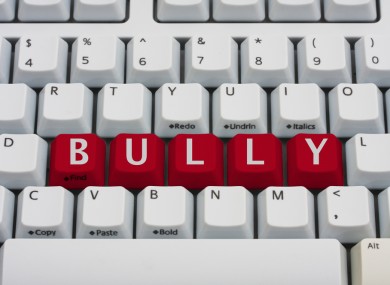Bullying Shackles | Verol Billett

Being a victim of bullying is a heavy burden to bear. Being constantly preyed upon can weaken one’s mental strength and sense of resilience; leaving them in a pool of hopelessness, and a small ball of anxiety. The topic of bullying has been on the lips of many, and is a conscious concern for parents and caregivers. The reality is, bullying is very much present in our Jamaican/Caribbean society, and daily, we are hearing and seeing it in its various forms.
According to the American Psychological Association, bullying is a form of aggressive behaviour in which someone intentionally and reportedly causes another person injury or discomfort. Bullying can take the form of:
- physical contact
- in the exchange of words,
- or more subtle actions such as repetitive taunting.
Interestingly, a key trait of this phenomenon is that there is a perceived imbalance of power. The bully is perceived to have more power or influence over the victim. The bully then uses his/her “greater power” to manipulate their victim.
Types of Bullying
No longer is bullying just a matter of the bigger child taking physical advantage on the smaller child. We have moved much further beyond that. While this still happens, we also have to take into account more modern manifestation of the phenomena. Believe it or not, as we mature as a society, bullying has become more dynamic, and is more easily done. According to the National Centre Against Bullying, there are four main types:
- Physical Bullying which refers to intentional direct and forceful physical contact inflicted by the bully unto the victim for example, by hitting, pinching, pushing or kicking.
- Verbal Bullying refers to the use of speech to insult, intimidate or manipulate an individual. These may include teasing, insulting or name calling.
- Social Bullying refers to the harming of an individual by targeting their reputation or humiliating them, which would result in discrimination or isolation.
- Cyber Bullying refers to individuals using the internet to harm their targets either through private means such as direct/private messages/emails or on public forums such as social media, public forums, blogs or websites.
Signs of Bullying
Bullying can be overt, meaning that it is observable by others. It can be covert, where individuals outside of the interaction are unable to detect what is occurring. However, what we can look for are the effects of bullying that may occur in an individual. Changes may occur which may include:
- change in personality or behaviour, where the child becomes more aggressive or more socially withdrawn
- change in perception of self or decreased self-esteem
- eating/sleeping patterns have changed
- decreased desire to engage in pleasurable activities
- showing signs of avoiding people and places.
Watch out for unexplained bruises, or constant or unexplained damage to property, or missing property; patterns of illnesses or random outbursts and frequent mood swings. Enduring bullying for lengthy periods could result in the development of mental illnesses. These are just some of the signs one could see in a child who is being bullied. Notably, this list is not exhaustive, and the presence of these in your child may not be as a result of bullying.
Breaking the Chains
If you witness bullying, speak up, regardless it is your child or not. If the bully is from your child’s school community, speak to a teacher, an administrator, or the guidance counselor at the school so that the issue can be investigated and resolved quickly. A school cannot act upon a matter unless they are aware that it is happening.
If it is outside of school, such as at your child’s extracurricular activity, speak to the organizer of the activity. If the children associate in a social environment, then seek audience with the bully’s parents to resolve the issue calmly.
In order for our children to be saved, it is important that adults foster a good relationship with their children so that they will be able to speak to them when something bad is happening to them. They need to feel safe and loved. Sometimes, when children feel bullied, the bully plays into the hopelessness of the victim so that they feel they have no one they can trust. Therefore, the bully intimidates them into believing that they will be punished should they speak up.
Many a times, the bully also has chains that need to be broken. Though it may be difficult to do so because your child is the victim, it is important that a calm approach is used so that one can understand both bully and victim. There are various reasons one can resort to bullying and this needs to be understood. Find the best way to correct the issue. Importantly, just punishing the bully will not make the issue go away. The root cause, which could be social, mental, emotional or a combination, should be addressed.
Being Free and Happy
Helping all the parties involved in a bullying situation seems to be the best way to go in effectively resolving the issue. The aim is to have all our children happy and whole. It is very useful to have children in this context examine the relationship, and have them be involved the resolution. This promotes understanding; thus, building healthy conflict resolution skills and helping to build confidence in self. In order to ensure this happens, adults have to remember we are their potential models for how to be free and happy!
Written by Verol Billett, Associate Clinical Psychologist
Related Posts
Empathy: What is it, what are its pros and cons, and do we all have it? | Justine East-Campbell
I’m sure many of us have grown up hearing the term, “put yourself in someone...
Bullying Shackles | Verol Billett
Being a victim of bullying is a heavy burden to bear. Being constantly preyed...



